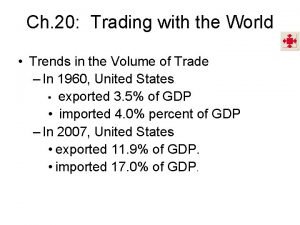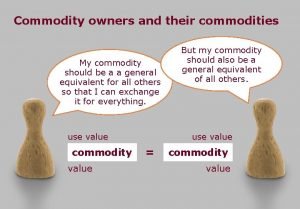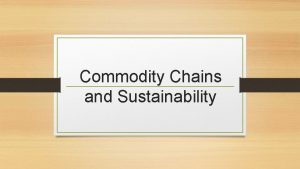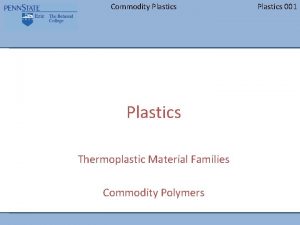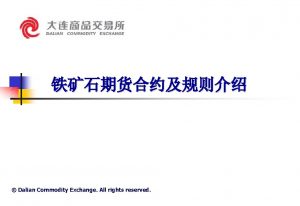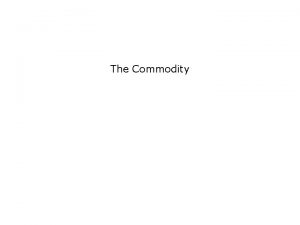Harmonized System HS The Harmonized Commodity Description and










- Slides: 10

Harmonized System (HS) • The Harmonized Commodity Description and Coding System (HS) is an internationally standardized nomenclature system for classifying goods (not services) that are traded internationally, maintained by the World Customs Organization (WCO). • It is used globally, including the United States, Canada and Mexico. (The United Nations uses its own system, UNSPSC) • The U. S. International Trade Commission and U. S. Customs and Border Protection are the U. S. Government agencies representing the United States to the WCO. 1

NAICS vs HS NAIC S U. S. , Canada and Mexico Harmonized System (HS) Global Different systems, different purpose, but there are ways to connect them 2

Harmonized System (HS) was created for International Trade • The HS is a top-down, hierarchical system. Goods must first be classified according to their 4 -digit heading, then 6 -digit subheading, then 8 -digit tariff rate subheading, then 10 -digit statistical subheading. • The idea behind HS was to have a common set of descriptive categories for goods traded internationally. The system organizes goods into categories, down to the 6 -digit level, are the same for all WCO member countries (internationally harmonized). • Countries may add two digits to break the six digit subheadings into discrete subsets for tariff purposes, and an additional two digits may be used for statistical purposes. These 8 - and 10 -digit subheadings can differ country by country. 3

Harmonized System (HS) in the U. S. Harmonized Tariff Schedule (HTS) • The U. S. Harmonized Tariff Schedule (HTS), maintained and updated by the U. S. International Trade Commission (ITC), is based on the HS, and is used by the United States to determine the tariff rate for goods being imported into the United States. • The Schedule B (Statistical Classification of Domestic and Foreign Commodities Exported from the United States), is maintained by the Census Bureau, it is also based on the HS, and is used by the United States to classify goods being exported. While the HTS and Schedule B match the HS through 6 -digit subheadings, they do not necessarily match each other at the 10 -digit level. With few exceptions, HTS codes can be used to report U. S. exports, in lieu of Schedule B codes (For exceptions, see http: //hts. usitc. gov/view/Notice%20 to%20 Exporters) Harmonized Tariff Schedule of the United States (2018) Revision 1. 1, (Effective Date 02/07/2018) 4

HS organization Harmonized System (HS) Comprises 21 Sections covering 96 chapters. Organized in: Sections Each Section consists of Section Notes, which define the scope of the Chapters and headings within the Section. It is a grouping of a number of Chapters which codifies a particular class of commodities. Chapter (First 2 digits of the heading) Each Chapter consists of Chapter Notes, and the codes and descriptions of commodities which are generally related to the title of the Chapter. SECTIONS Heading (4 -digit Code) The first two digits of the HS Code indicate the Chapter while the latter two digits indicate the position of the Heading in the Chapter. Subheading (6 -digit Code) Each Heading can be subdivided into further subheadings where necessary. CHAPTERS HEADINGS Country-specific breakdown (8 or 10 -digit Code) Countries often set their customs duties at the 8 -digit level. Statistical suffixes are often added to the 8 digit tariff code for a total of 10 digits. SUB HEADINGS COUNTRY SPECIFIC BREAKDOWN INTERNATIONAL LEVEL DOMESTIC LEVEL 5

HS product distribution Goods are organized according to additional value-added features. Raw materials and unprocessed goods can be found in the earlier chapters. Finished goods can be found in the later chapters. The same principle applies within each of the chapters. 6

HS code structure: International vs National level An HS code has at least 6 digits. HS codes are globally harmonized and are accepted by country members of the World Customs Organization. INTERNATIONAL If desired, individual countries can also use additional digits (8 or 10) to detail the classification even further. It is important to remember this point since HS codes at the 8 or 10 digits levels can differ from country to country. NOTE: In different countries, the same code at the 8 or 10 digit level might be for slightly different products. For Marine Tech products, that subtle difference might be significant for the companies selling those products. 7

HS – Where is it used? IMPORTER EXPORTER International transportation Seller Local transportation Buyer Exporting country customs ORIGIN INTERNATIONAL BORDER Domestic transportation Importing country customs DESTINATION 8

HS – How is it used? HS codes are used by Customs agencies, both at origin and destination EXPORTER IMPORTER • Required by CBP as part of the Export documentation • Required by foreign country customs agency to determine the tariff and duties that the importer will have to pay • Statistical value • Required to import the product • Statistical value 9

HS – Uses U. S. exporters need to know their product’s HS numbers for the following reasons: 1. To determine applicable import tariff rates and whether a product qualifies for a preferential tariff under a Free Trade Agreement (FTA) 2. To file the Electronic Export Information in the Automated Export System (AES). This system requires 10 digits HS numbers without periods. 3. To complete shipping documents, such as certificates of origin. (to get the preferential tariff under a FTA) 10


